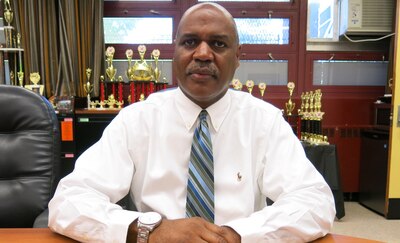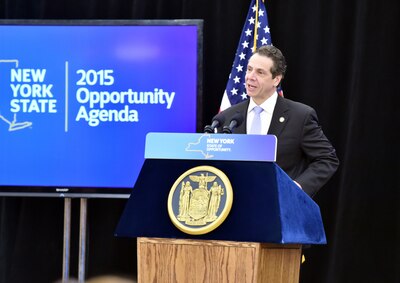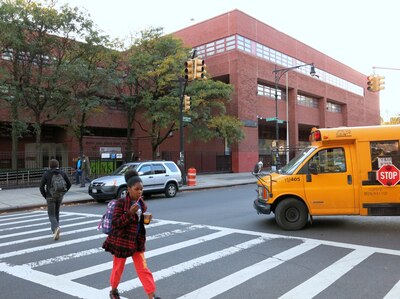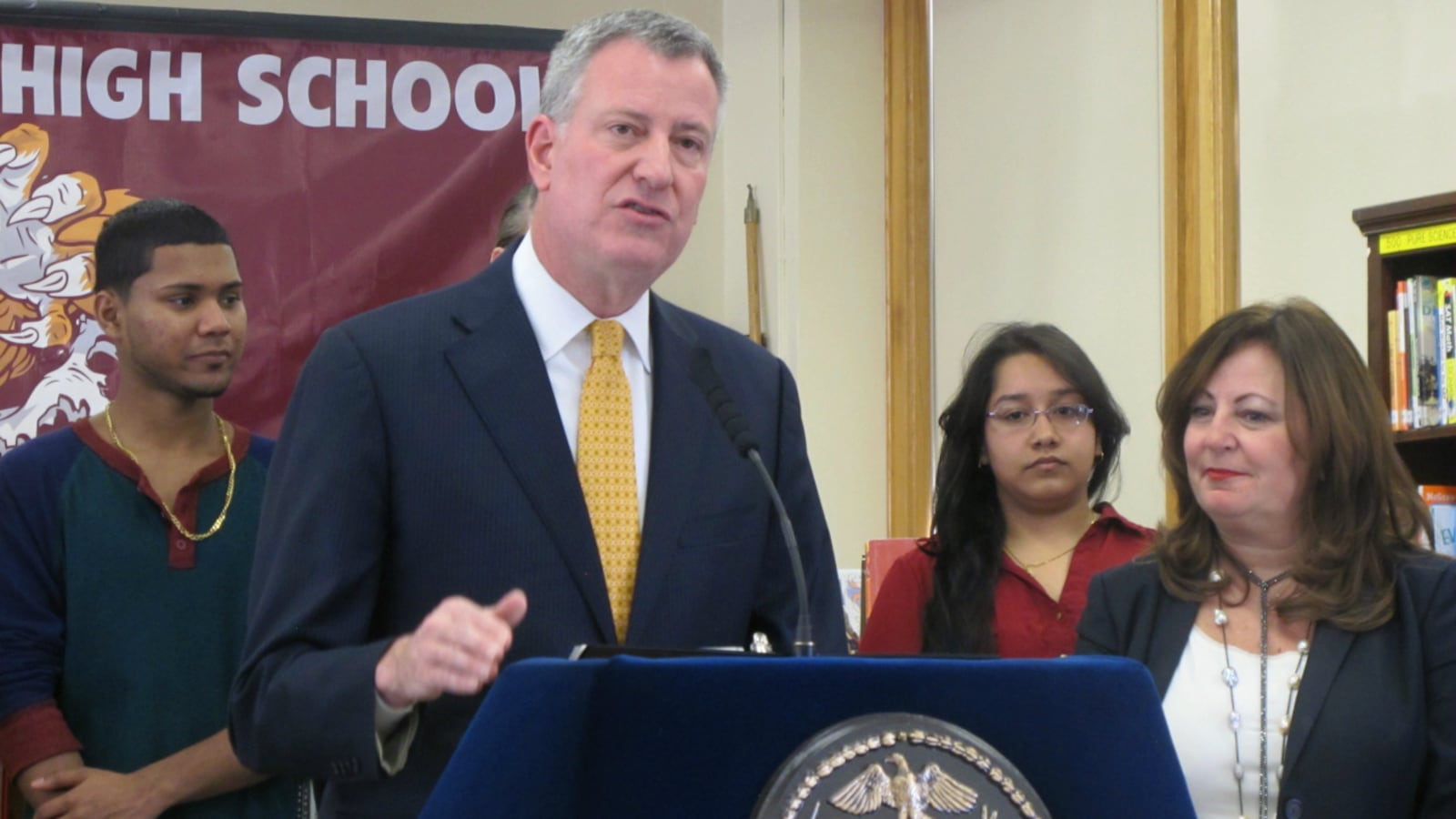The stakes are high for the city’s school-turnaround program, which Chalkbeat has tracked closely over the last year.
We’ve put together a guide to what’s happened so far, starting from last summer, when a few struggling schools wondered what the city had in store for them. Mayor Bill de Blasio unveiled a $150-million “School Renewal” plan in November, promising to flood 94 of them with support for students and staff — with the expectation that the schools would be closed if they don’t make significant improvements within three years.
July 2014: Deadlines loom
The city was facing a looming state deadline to launch overhauls at dozens of the city’s lowest-ranked schools by September, but Chancellor Carmen Fariña had yet to announce how the department would prop up the city’s lowest-performing schools.
September 2014: The plan before the plan
The city quietly launched an intensive-support program for 23 schools that the state had identified as struggling. The “School Achievement Initiative” plan was meant to satisfy federal requirements that said districts had to begin “whole-school reforms” in long-struggling schools by the start of the school year. The roughly two-dozen schools would be folded into the Renewal program in November, and received the most direction and support from the city in the program’s first year.
Aimee Horowitz was appointed to oversee 13 low-performing high schools – including Boys and Girls and Automotive – in the initiative. Two weeks into the school year, principals at schools involved in that first turnaround initiative, including Boys and Girls, said they didn’t know how the city planned to intervene.
The state had required the group of schools to submit improvement plans by July 31 and start implementing them at the start of the school year, but the city turned in “placeholder” plans and asked for an extension on the final versions, which were submitted at the end of October.
October 2014: Leadership changes at Boys and Girls

Boys and Girls and Automotive high schools have remained among the state’s lowest-ranked schools for at least five years, and the Brooklyn schools were labeled “out of time” by the state.
After complaining for months that the city had not implemented the improvement plan for long-struggling Boys and Girls, principal Bernard Gassaway said he would step down because he believed the city’s strategy to turn around the struggling school was “doomed to fail.”
Michael Wiltshire, the longtime leader of Medgar Evers College Preparatory School, was appointed to take over as principal of the Bedford-Stuyvesant school. Wiltshire was given a $25,000 bonus for taking on the tough assignment, and the option to leave Boys and Girls next year and return to the successful school he led for over a decade.
Under the new principal, Boys and Girls staff said in November that students who were missing many credits or otherwise unlikely to graduate this year were encouraged to transfer out. Over the past five years, the school has watched its enrollment dwindle from 2,300 to 750 students, and only about four in 10 students graduate each spring.
November 2014: ‘Renewal’ plan announced for 94 schools
Ten months into de Blasio’s term, the mayor announced the $150-million turnaround plan, which will work to fix 94 of the city’s lowest-performing schools by turning them into “community schools.”
The city vowed to bring physical and mental health practitioners, guidance counselors, adult literacy teachers, and a host of other service providers into these schools. They will also add an extra hour of tutoring to the school day and receive money for new after-school seats, summer programs, and more additional teacher training.
Here are all of the participating schools:
After the state ordered the city to put a plan in place at both “out of time” schools to reevaluate their administrators and staffers and replace any who were “unwilling or ineffective,” the city and union announced a plan that will require staff members at Automotive and Boys and Girls high schools to reapply for their jobs before the start of the 2015-16 school year. The hiring committees would be made up of superintendents, teachers and principals union representatives, city appointees, and parents.
January 2015: Gov. Cuomo wants the state to take over struggling schools

Gov. Andrew Cuomo announced plans to push for a broad overhaul of state education policy in his proposed budget, including a new law that would appoint outside groups to oversee the state’s lowest performing schools.
Nonprofit groups, school-turnaround experts or other school districts would act as “receivers” with the authority to restructure struggling schools, overhaul their curriculums and offer extra pay to attract successful teachers, among other measures.
Fariña also named Christopher Tricarico, a former principal and school-support administrator with nearly 20 years of experience, to oversee the department’s new Renewal School Office.
February 2015: De Blasio defends turnaround program to state lawmakers
Mayor Bill de Blasio told lawmakers that the governor’s plan to let outside groups take over struggling schools is unnecessary in New York City, since the city is going to “enormous lengths” to turn around those schools.
He also repeated his pledge to close troubled schools that fail to improve after three years, and said that his authority over the city’s schools means that voters can hold him accountable for their progress.
Meanwhile, Board of Regents Chancellor Merryl Tisch said she “saw shoots of green” at Automotive High School, one of the two “out of time” schools under intense pressure to show improvement.
March 2015: A staggered rollout
The program had a staggered rollout since its November launch. While the city has heaped extra supports on some of the 94 schools, like Boys and Girls, others were left waiting for the intensive help they expected.

A group of high-priority schools in the program were assigned principal mentors and teacher coaches, assessed by city officials and given specific goals for the year, and sent fewer challenging students. Meanwhile, some other Renewal schools had only met with program officials once, had not been given specific targets, and had not been assigned mentors or coaches.
De Blasio and Fariña defended the progress of the city’s Renewal schools at Boys and Girls High School, citing that school’s new principal and academic improvements. De Blasio also announced that the entire program will be overseen by Horowitz, whose title is “executive superintendent.”
The city then put the focus on Richmond Hill High School, another school in the high-priority group. At a press conference there, de Blasio focused on how the city’s plan made the governor’s plan to let outside groups take over struggling schools unnecessary. Using language like “war room” sessions, de Blasio said “SWAT teams” of skilled educators will be sent to some schools as education officials study the police department’s data-driven approach to crime fighting known as CompStat.
On a visit to P.S. 123 in Central Harlem, another school in the program, Fariña focused on improving attendance, writing instruction, teacher training, and coaching the least effective teachers to leave.
April 2015: Talk of teacher quality
A Chalkbeat analysis found that students who attend Renewal schools were twice as likely to have a low-rated teacher than their peers in an average city school. The city said schools will encourage weak teachers to leave voluntarily, while offering extra support for existing teachers and bonuses to bring in new talent.
Meanwhile, about 20 schools identified by Gov. Cuomo’s office as facing the threat of takeover by outside groups are not part of the city’s turnaround program.
The state also designated six more schools as “out of time”: Herbert H. Lehman High School, Banana Kelly High School, Mosholu Parkway Junior High School, and Fordham Leadership Academy for Business and Technology in the Bronx; and August Martin High School and John Adams High School in Queens.
Fariña announced that Americorps will spend $5.8 million over the next two school years to place a volunteer in each of the nearly 130 schools that the de Blasio administration is converting into “community schools,” including the 94 Renewal schools.
The program also divided the Panel for Educational Policy, with some members saying they wouldn’t vote for new co-locations at buildings with Renewal schools in an effort to keep them from confronting new challenges.
May 2015: City tells schools to define goals
City officials unveiled early drafts of the rubrics that the 94 schools will use to set goals for attendance, test scores, and graduation rates for the next two years. Schools in the program were given some choice as to how the city determines whether they’re measuring up.
Schools continued to grapple with the challenge of attracting students. Eighty of the 94 schools have seen their enrollment dip over the last two school years, and 14 have seen more than one-third of their total enrollment disappear since 2013, according to the Independent Budget Office. The schools are also serving an outsize share of English language learners, black students, Hispanic students, and students in temporary housing.
Mayor Bill de Blasio also announced that the city would increase spending by about $34 million next year on 130 schools that struggle with low student achievement and attendance, including Renewal schools. In subsequent years, the city will boost funding by $60 million annually for those schools.
June 2015: Schools prepare for the fall
Staff members at Renewal schools used a training day to choose goals for the next two years and to finalize their improvement plans.
Chancellor Fariña announced that the city will be sending schools in the turnaround program fewer latecomer students, who often post an extra challenge for schools. The city’s choice-based admissions process often leaves low-performing high schools struggling to fill their seats, which are then often filled with students that enter the system after admissions deadlines.
Meanwhile, principals rushed to figure out how they would squeeze an extra hour of instruction into school schedules alongside mandatory teacher training and existing after-school programs. Principals union officials pushed back, saying schools hadn’t been given “sound” proposals about pay and scheduling from the city. After meetings between Chancellor Fariña and union leaders, schools were given a few extra days and new options for scheduling the extra hour.
Fariña, de Blasio and Mulgrew gathered the principals of low-performing schools for a meeting that was part pep rally, part professional development. The private event allowed school leaders to refine their improvement plans for next year.
Four Renewal schools saw enough progress on test scores or graduation rates to be taken off the state’s list of worst-performing schools, though they remain in the city’s turnaround program.
At graduation, de Blasio praised Boys and Girls High School for a “rebirth.” The mayor celebrated the school’s new principal, Michael Wiltshire, who added an extra period to the school day, hired Kaplan to offer test preparation courses and let top students take classes at Medgar Evers. Despite these improvements, the school still struggled with declining enrollment and a low graduation rate.
July 2015: Big staff changes for two high schools
After the re-hiring process agreed to by the city and the unions, Boys and Girls and Automotive announced the majority of teachers would not return next school year.
The state released a list of 62 New York City schools that could be taken over by outside groups within two years, 50 of which are part of the Renewal initiative. Cuomo’s plan puts the state and city at odds over the best way to improve low-performing schools. While de Blasio’s turnaround model is backed by unions and infuses struggling schools with extra resources and support, Cuomo’s plan gives power to outside managers, sidesteps union rules and could lead to more charter schools.
A list of schools that could be taken over by outside groups is here.
Meanwhile, at the helm of a large chunk of the Renewal program is Leticia Rodriguez-Rosario, the superintendent of District 9 in the southwest Bronx, who is tasked with overseeing eight Renewal schools—the most of any superintendent.
August 2015: The program’s scope grows clearer
When new funds from federal and state sources are accounted for, the Renewal program will cost almost $400 million, not the $150 million that was initially described, according to estimates by the city’s Independent Budget Office.
A new round of state test scores underscored the challenges ahead for the Renewal schools. The average English pass rate for the 63 Renewal schools where students took the grades 3-8 state exams this year was 7.5 percent, compared to the city’s 30 percent average. In math, the Renewal pass rate was about 7 percent, compared to 35 percent for the city.
And the city appointed a new principal to take over the struggling Herbert H. Lehman School, a large school in the Bronx that narrowly avoided being shut down by the city once before.
September 2015: Receivership looms
The Richard R. Green campus in the Bronx, which houses three Renewal schools — School of Diplomacy, Young Scholars Academy, and the Globe School for Environmental Research — started off the school year with an eye toward revitalization. Under the city’s Renewal program, the school partnered with outside organizations to develop after-school programming, a satellite mental health clinic, and boost parent outreach.
Low-performing schools across the city were under pressure to show rapid improvement under the state’s new school improvement law. If the 62 schools on the list don’t show improvement within the strict timeline, they can be turned over to a “receiver,” an outside manager or organization.
Of the 62 schools identified by the state, 50 are Renewal schools. To address overlapping goals, the city worked to align the receivership indicators with its Renewal targets.
To inform families about receivership, schools held meetings after school on short notice. At some schools, attendance was low and some parents noted that the meetings did not help them understand receivership.
October 2015: Partnerships grow
Mayor de Blasio took a trip to Brooklyn Generation, where he held the school up as a poster child for growth. The school welcomed new services this year, including teaching artists and extracurricular programming.
Progress also came to the Richard R. Green campus. Juanita Rodriguez, in her role as the director of Renewal for District 11, made sure the schools’ community partnerships brought necessary changes to the schools. Commissioner Elia and Chancellor Farina also toured the School of Diplomacy to tout those partnerships.
November 2015: One year later
At a City Council oversight hearing, Executive Superintendent Aimee Horowitz, who runs the Renewal program, said schools have made strides in attendance, family involvement, and safety, and have shown “incremental” academic progress.
Commissioner Elia and Chancellor Fariña took another tour of schools in the city’s Renewal program. At P.S. 298 in Brownsville, the officials focused on the quality of literacy instruction. The school has added five more hours of learning time each week and hired more experienced teachers.
At the Juan Morel Campos Secondary School, teachers confronted the challenge of outdated data management systems that prevented them from tracking information like student attendance with data meetings and Google Sheets.
December 2015: Where are those goals?
The city refused to release the goals it set for schools in the Renewal program, despite referencing them when referring to the program. The goals, which were released to the schools May, included targets for attendance, test scores, and graduation rates.
Officials would not say whether the goals would be made public and suggested that parents directly ask schools for the goals. But after unrelenting criticism from parents and advocacy groups, the city released the goals.
That raised new questions about whether those goals were ambitious enough to spur the kind of turnaround city officials have said is possible for these schools. Renewal schools have three years to reach the equivalent of other schools’ one-year goals — a timeframe that earned sharp criticism from outgoing Board of Regents Chancellor Merryl Tisch.
Chancellor Fariña then announced plans to close three low-performing schools, two of which were in the Renewal program. Both schools, The School for the Urban Environment and Foundations Academy, were plagued by low enrollment and funding shortfalls.
January 2016: Concerns from principals
The principal union’s chief called Mayor de Blasio’s school improvement plan “a recipe for disaster.” The program, he said, is overwhelming principals with paperwork and compliance. Chancellor Carmen Fariña responded by saying that most principals are “extremely happy” with the Renewal program.
Mayor de Blasio released his $81.6 billion city budget proposal that boosts funding for nearly 660 schools. Overall spending for the Renewal program would increase slightly to $189 million next year and the budget adds funding for new programs, like $1 million per year for doctor visits at schools without health clinics and another $1.5 million per year for staff training.
The proposal also allocated nearly $2.5 million for a data system being used at the city’s Renewal and community schools.

